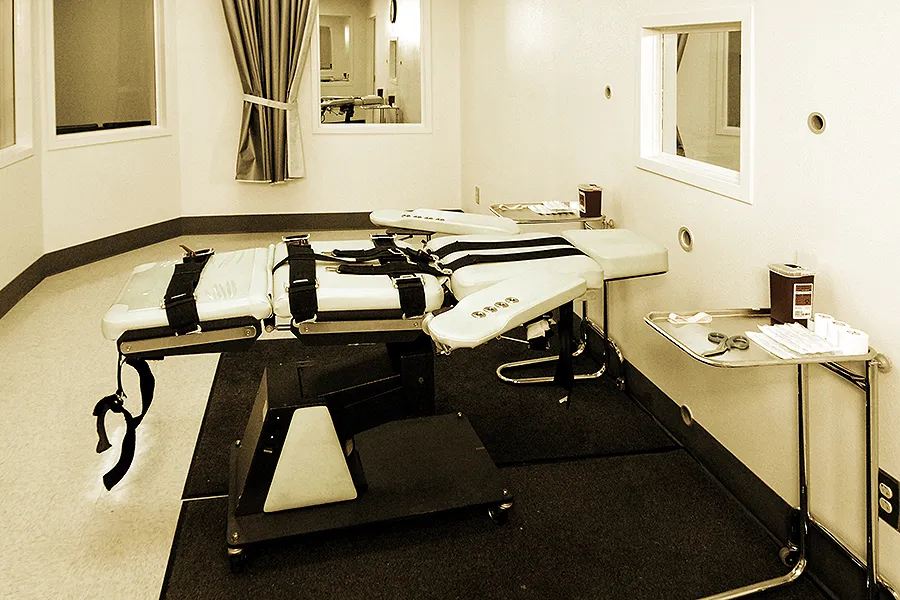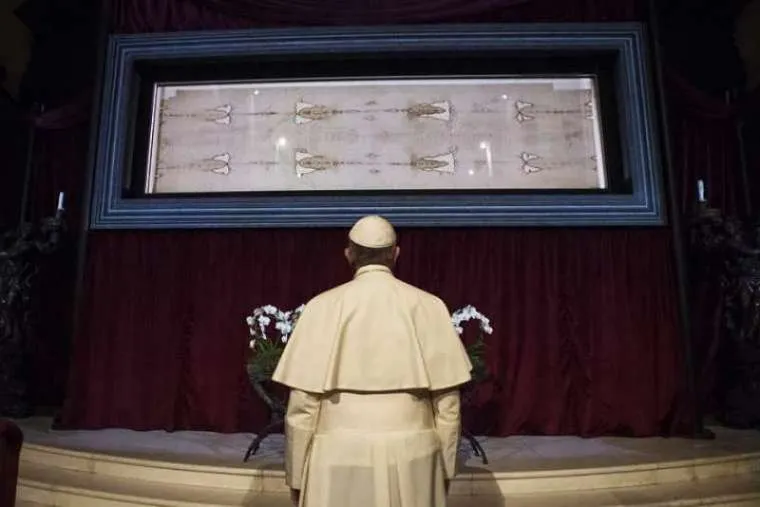
Washington D.C., Jul 20, 2018 / 12:00 pm (CNA).- The Church has consistently taught that the state has the authority to use the death penalty. But, in recent years, popes and bishops have become more vocal in calling for an end to its use. Many Catholics instinctively favor life over death, even after the worst crimes, and some are left wondering if the Church’s mind is changing.
Two recent cases highlighted an apparent tension between traditional teaching and modern circumstances.
On July 13, the bishops of Tennessee wrote to Governor Bill Haslam asking him to halt a slate of planned executions. In their letter, Bishops Mark Spalding of Nashville, Richard Stika of Knoxville, and Martin Holley of Memphis emphasized the value and dignity of every human life, even those who have committed the worst possible crimes.
One day earlier, on July 12, Cardinal Malcolm Ranjith, Archbishop of Colombo, expressed his “support” for the Sri Lankan government’s decision to introduce the death penalty for drug traffickers and organized crimes bosses.
“We will support [Sri Lankan] President Maithripala Sirisena’s decision to subject those who organize crime while being in the prison to [the] death sentence,” he told local media. The cardinal went on to add that more needed to be done to prevent drug traffickers and crime bosses from operating with impunity while in jail.
The state’s authority to execute criminals is explicitly sanctioned in the Bible, including by St. Paul. Historically, the Church has recognized the use of the death penalty in a practical way: executions were carried out in the Papal States well into the nineteenth century, with the last official executioner retiring in 1865.
For much the twentieth century, attempted assassination of the pope was a capital crime in Vatican City; Pope Paul VI only removed the death penalty from the law in 1969.
Today, the Church still officially teaches that the death penalty is a legitimate option for states to employ.
The Catechism of the Catholic Church teaches this: “Assuming that the guilty party’s identity and responsibility have been fully determined, the traditional teaching of the Church does not exclude recourse to the death penalty, if this is the only possible way of effectively defending human lives against the unjust aggressor.”
This formulation contains a heavy qualification. When exactly is the death penalty the only effective means of defending human life? That’s a thorny question.
St. John Paul II was outspoken in his opposition to the use of capital punishment. In an address in the United States, in 1999, he called for Christians to be “unconditionally pro-life” and said that “the dignity of human life must never be taken away, even in the case of someone who has done great evil.” He also spoke of his desire for a consensus to end the death penalty, which he called “cruel and unnecessary.”
That address, given in St. Louis, was credited with helping persuade to Missouri Governor Mel Carnahan to commute the death sentence of inmate Darrell Mease to life in prison.
More recently, Pope Francis has denounced capital punishment in even stronger terms. Speaking in October 2017, he called it “contrary to the Gospel” because “it is freely decided to suppress a human life that is always sacred in the eyes of the Creator, and of which, in the final analysis, God alone is the true judge and guarantor.” He has, however, stopped short of revising the official teaching contained in the Catechism.
There is a broad sentiment among American Catholics against the death penalty. It is a point of unusually strong consensus, even among those who normally disagree. In 2015, four Catholic publications with often-divergent viewpoints issued a joint editorial calling for an end to capital punishment.
But Catholic thinkers do not unanimously agree that a total renunciation of the death penalty is appropriate, or even possible.
Cardinal Joseph Bernadin, in his famous “Consistent Ethic of Life” speech delivered at Fordham University in 1983, explicitly recognized the legitimate authority of the state to resort to capital punishment. Cardinal Avery Dulles, writing in 2001, observed that “the Catholic magisterium does not, and never has, advocated unqualified abolition of the death penalty.”
While there is real scope for debate about when and how sparingly capital punishment should be used, Dulles concluded that “the death penalty is not in itself a violation of the right to life.”
His conclusion was informed by the constant teaching of the Church that judicial executions are licit, even if regrettable and to be avoided whenever possible.
In the City of God, St. Augustine wrote that the state administers justice under divine concession. “Since the agent of authority is but a sword in the hand, and is not responsible for the killing, it is in no way contrary to the commandment, “Thou shalt not kill”… for the representatives of the State’s authority to put criminals to death, according to law or the rule of rational justice.”
While the trend of recent papal statements has been towards a relegation of the death penalty to, at most, a theoretical possibility, scholars have urged caution about going too far.
Dr. Chad Pecknold, associate professor of systematic theology at the Catholic University of America, told CNA that it was important distinguish between changing circumstances and a change in what the Church has always taught.
“The Church has always held that the death penalty is a just option available to the state, even if we do not welcome its use. St. Augustine says that the death penalty is just, but the Church should plead for mercy.”
Pecknold stressed that relationship between mercy and justice is a live concern. In seeking mercy, he said, we must implicitly recognize the validity of justice.
“Mercy isn’t calling something that is just ‘unjust.’ Mercy relieves the punishment properly due to the guilty. As the Catechism recognizes, there can be circumstances in which the death penalty is a legitimate service to justice. This is qualified by a preferential option for other means, whenever they can serve the same ends.”
These alternative means have not been always and everywhere available. “The common and constant teaching of the Church can be applied to different circumstances. Alternatives available to us in modern western countries simply have not been present at other times, or may not be now in other places.”
There is a crucial difference between applying a consistent teaching to changed circumstances and appearing to suggest humanity has evolved beyond a previously valid doctrine, Pecknold said.
“The death penalty is not, and has never been a positive end in itself. It is a means towards serving justice. If we find we can now serve the same ends and express a preferential option for life, this is doubly good.”
“But we should not fall into a false understanding that what was once ‘good’ is now ‘bad.’ The Church doesn’t evolve out of a true teaching, nor does humanity progress beyond natural law.”
“We should prize our increasing opportunities to serve mercy and justice together, but be wary of giving ourselves too much credit, we have not progressed to a new, higher level of justice.”
Cardinal Dulles agreed. He considered the argument that Church sanctioning of capital punishment was an “outmoded” concession to past ages of “violence” and “barbarity,” one which could yield to “the signs of the times” and “a new recognition of the dignity and inalienable rights of the human person.” He dismissed this as “a tempting simplicity” which found “no echo” among Catholic theologians of the past.
The consensus against capital punishment in modern western nations, it must be observed, has grown in line with increased prosperity, political stability, and states’ ability to deploy credibly effective alternatives to execution.
In the recent Sri Lankan case, the government acted in response to the ineffectiveness of prison sentences, with drug traffickers and crime bosses seeming to continue operating with impunity, even behind bars. Following local complaints at his expression of support, Cardinal Ranjith issued a clarification, making clear his support for the government announcement was not a “carte blanche” advocacy for the death penalty, but noting that he could not “close my eyes and do nothing before this terrible phenomenon our country is faced with.”
“[The drug trade] causes death and violence in the streets and the destruction of the cream of our youth, who become drug addicts at an age as early as their adolescence, being exposed to drugs even in their schools. This is being done by drug cartels operated at times from the prisons,” he said.
For Ranjith, such a context seems to find a place within the Catechism’s criteria that capital punishment be reserved for the final defense of innocent life when other options fail.
In the West, conditions seem to be narrowing the scope for the death penalty’s use, and bishops are responding, which has led to a sense, especially after Pope Francis’ comments last year, that the Church might declare the death penalty absolutely unjust. Yet, as was recently seen in Sri Lanka and Tennessee, things are not yet the same everywhere.
That serves as a good reminder about the importance of understanding the Church’s global perspective, and the importance of distinguishing between teachings which supply criteria through which Catholics must make moral judgments, and teachings which declare that certain actions are, in fact, immoral everywhere and always.
The Church’s teaching on the death penalty expresses, essentially, a criteria by which state authorities should make judgments about the just use of the death penalty. While in the developed West, use of the death penalty may, in fact, be almost completely unnecessary, not all parts of the world are as developed.
The divergence of views from bishops around the world on this issue reflects the role that the circumstances of time and place can play in moral reasoning. That is instructive, and a reminder about the complex richness, and importance, of Catholic moral teaching.
 […]
[…]





